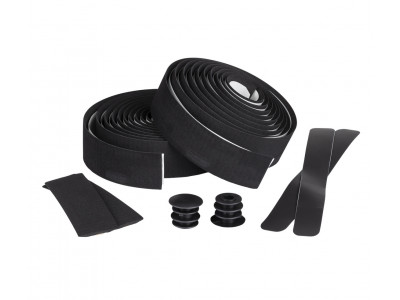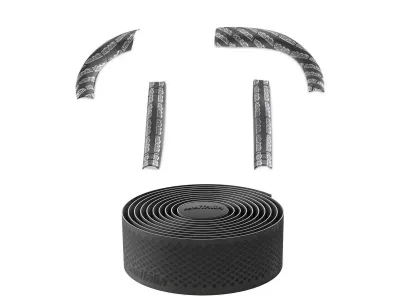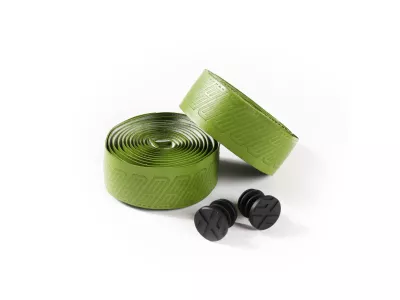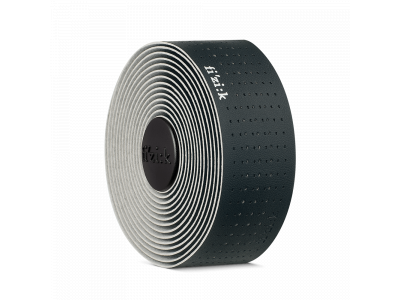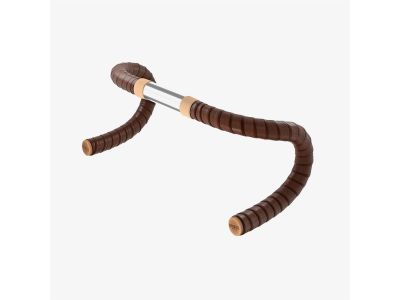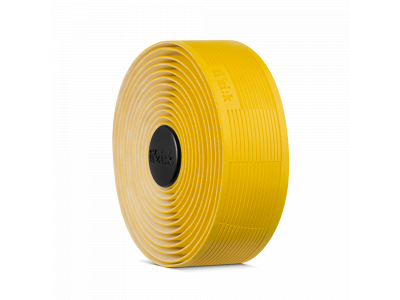Bicycle handlebar tape, also known as bar tape, is a wrapping material used to cover the handlebars of a bicycle. It provides cushioning, grip and comfort for the rider's hands while absorbing vibrations from bumps in the road. Bar tapes are available in a variety of materials, colours, patterns and thicknesses to suit different riders and aesthetics.
Specifications of bar tapes
Bicycle bar tapes have the following main parameters that differentiate them from each other:
- Material: Bicycle bar tapes are commonly made from materials such as cork, synthetic foam, gel, or a combination of these materials. Cork tapes offer a traditional and natural feel, while synthetic foam and gel wraps provide better cushioning and shock absorption.
- Thickness: Bar tapes come in a variety of thicknesses, usually from 1.8 mm to 3.2 mm. Thicker wraps provide more cushioning and are preferred for long-distance rides or rough road conditions, while thinner tapes provide a more direct and responsive feel when gripping the handlebars.
- Texture: Tapes have different surface textures that can affect grip and comfort. Some tapes have a smooth surface, while others have patterns, ridges or sticky textures to improve grip, especially in wet conditions.
- Adhesive backing: Bar tapes come with an adhesive backing to attach the tape to the handlebars. This adhesive helps prevent the tape from slipping or coming apart while riding.
- Length: Bar tapes are typically sold in rolls long enough to cover both handlebars. The length can vary, but is generally enough to cover most handlebar widths and provide a good fit.
How to choose bicycle bar tapes?
When buying tapes, consider the following factors that may influence your choice:
- Riding style: Consider your riding style and preferences. If you ride long distances or on uneven roads, you can prefer thicker tapes for better damping. For shorter rides or races, thinner tapes can offer a more direct grip, more precise steering and less weight.
- Grip and comfort: Look for bar tapes that offer a good balance of grip and comfort. Consider tapes with a sticky texture or gel inserts to improve grip, especially if you're riding in wet conditions or battling sweat.
- Durability: Choose handlebar tapes made from durable materials that can withstand regular use and resist wear and tear. Some tapes have additional properties such as abrasion resistance or anti-slip properties that can increase durability and longevity.
- Aesthetics: Bar tapes come in a wide variety of colours, patterns, and designs. Choose tapes that match the aesthetics of your bike or your personal style.
- Tape style: Consider the tape style you prefer. Some tapes are easier to wrap and adjust, while others may require more effort and technique.
- Price: Depending on the material, brand, and other features, handlebar tapes come in a variety of price ranges. Set your budget and select a tape that offers a good balance between quality and price.
How do I know when it's time to replace the handlebar tape?
Signs that it may be time to replace your handlebar tape include wear, tearing, fraying, loss of cushioning, or an overall reduction in grip or comfort. In addition, if the tape becomes excessively dirty or damaged, it is a good idea to replace it.
Can I install the tape myself, or should I seek a service?
Installing a handlebar tape can be done by many cyclists with a little practice and patience. However, if you're not sure or don't like the process, we recommend you seek professional help at the MTBIKER Center to ensure proper installation and optimal performance.
How can I wrap my handlebars?
Wrapping handlebars requires a specific technique. We recommend watching instructional videos or step-by-step tutorials available on the Internet with step-by-step instructions.
